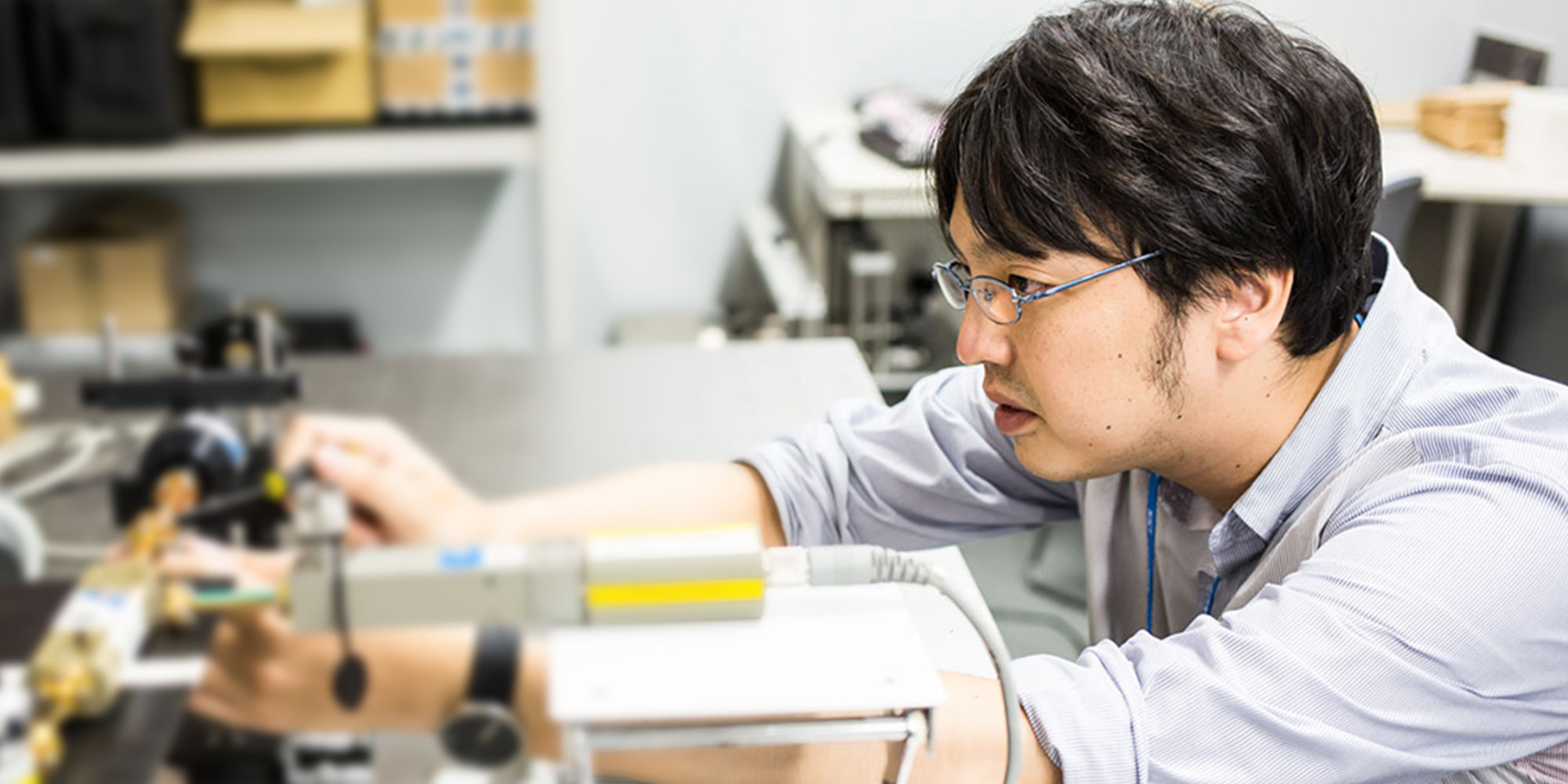
Strategic Planning Office, Strategic Planning Department Planning Manager
SASAKI KensukePh.D. (Engineering)
After completing a doctoral course in 2011, he is with the National Institute of Information and Communications Technology (NICT). His research interests are dielectric property measurement, bioelectromagnetics, and simulation science.
- Home
- Researchers
- SASAKI Kensuke
Safety assessment of electromagnetic wave
for safety use of electromagnetic wave
Safety assessment of electric field, magnetic field, and electromagnetic wave
Wireless communication technologies are now widespread and indispensable in our daily life despite the increasing public safety concern over electric field (EF), magnetic field (MF), and electromagnetic field (EMF) radiation. For human safety, the levels of exposure to EF, MF, and EMF radiation are limited in Japan (Guidelines for Human Safety). The guidelines are determined on the basis of an extensive review of the scientific literature. However, research on human safety is still necessary to clarify the suitability of the present guidelines for new technologies. Our research groups are evaluating the safety of communication technologies in a wide frequency range from LW to EHF (30 kHz to 300 GHz). Here, we introduce the technologies for safety assessment in the millimeter frequency band (at frequencies ranging from 30 GHz to 300 GHz), the wavelength of which ranges from 10 to 1 mm in air.
Recently, wireless communication technologies operating in the millimeter wave band have become increasingly widespread, such as very high speed wireless communication systems, collision radar for motor vehicles, and security systems. The absorption of electromagnetic energy is limited over the surface of the human body. Hence, the thermal effect is a possible biological effect of millimeter-wave radiation because millimeter waves absorbed by the body surface release energy that increases the tissue temperature. Here, several technologies that assess energy absorption due to millimeter-wave radiation are introduced as follows.
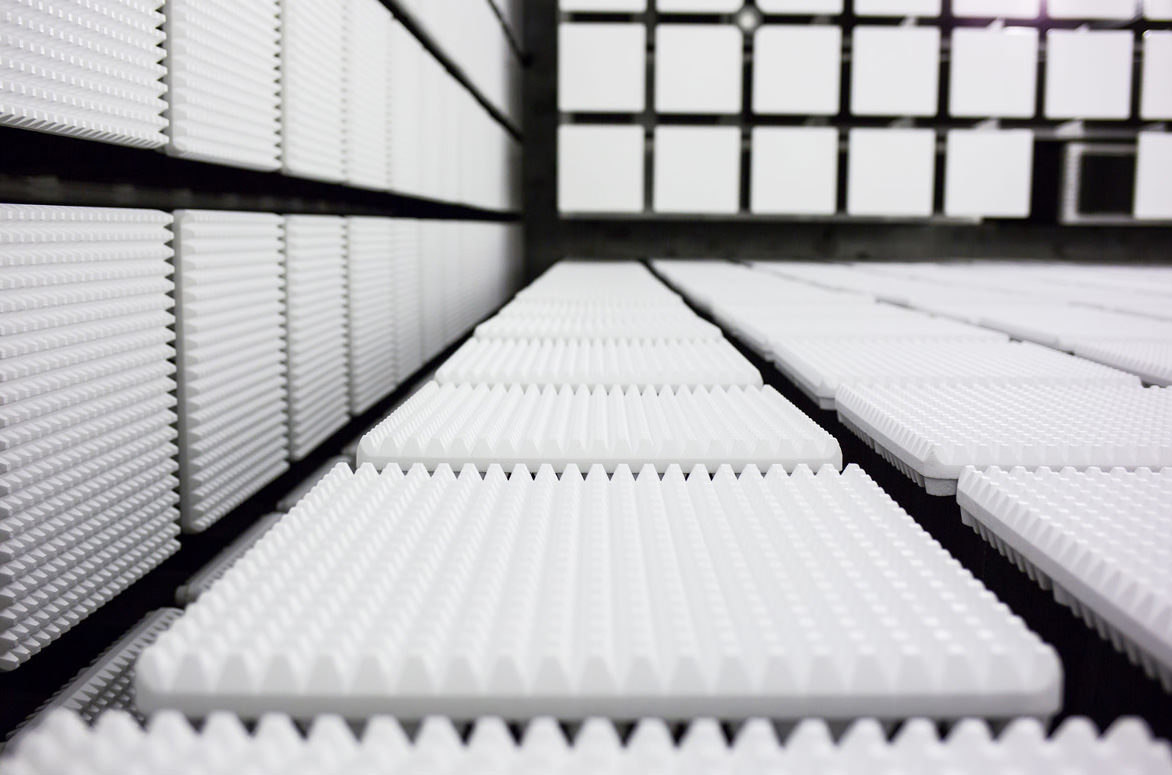
Large-sized Anechoic Chamber
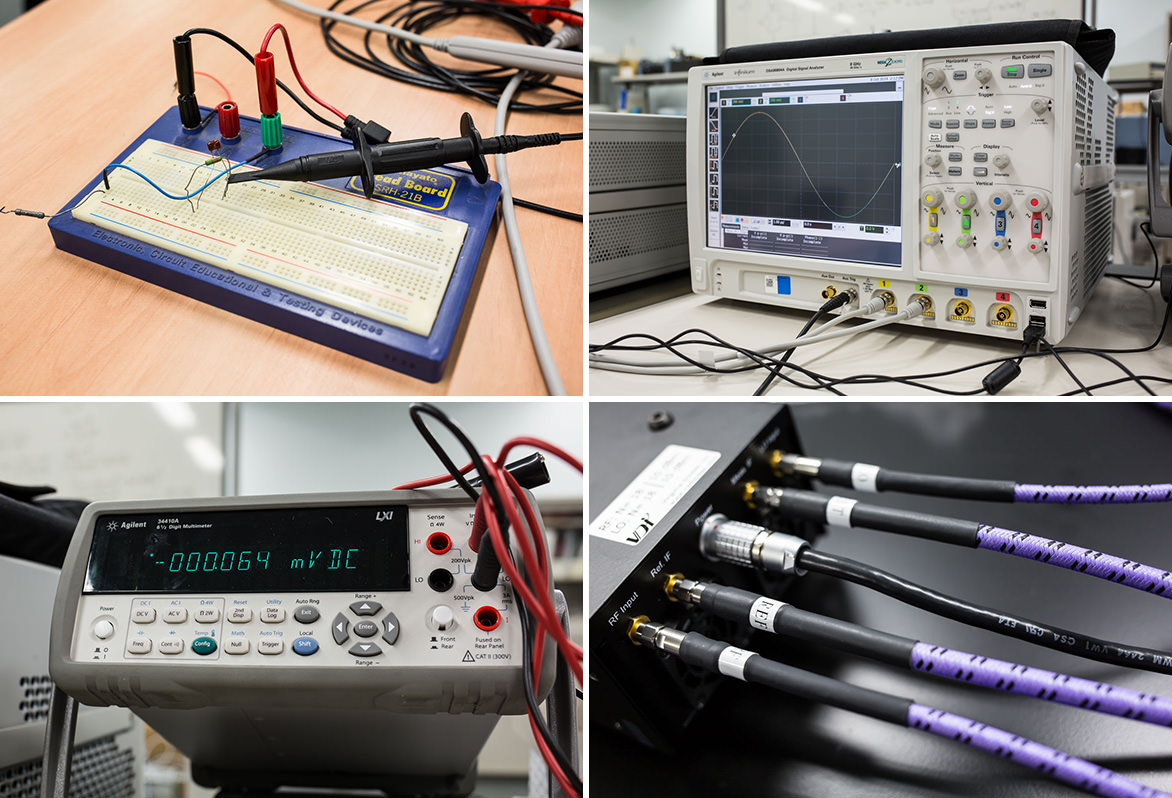
Equipments
Assessment using simulator (numerical dosimetry)
(1) Anatomical biological model
Simulation is one of the effective methods of quantifying energy absorption inside the human body. The human body consists of an enormous number of tissues and its construction is complex. Therefore, precise modeling of an actual exposure scenario is necessary to conduct a simulation. One of the inventions of our research group is anatomical human models that precisely imitate human tissues and organs. The human models are now widely used and contribute to the assessment of human safety and research and the development of medical applications at frequencies from ELF to SHF bands (Figure 1).
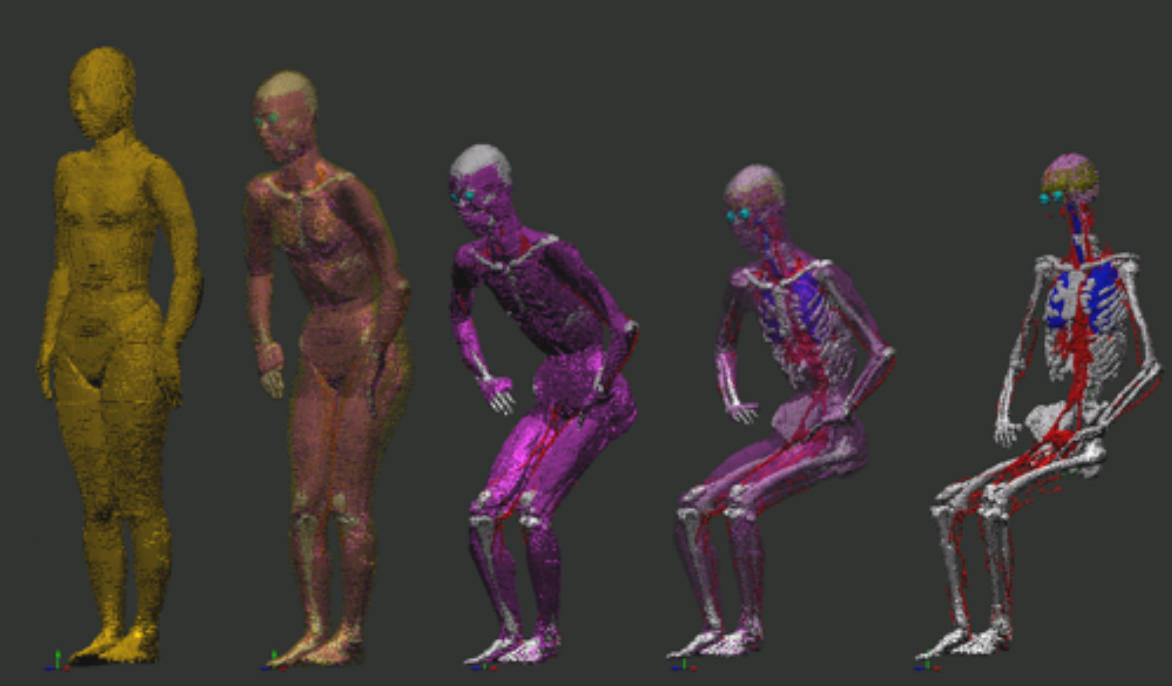
Fig 1. Anatomical human models
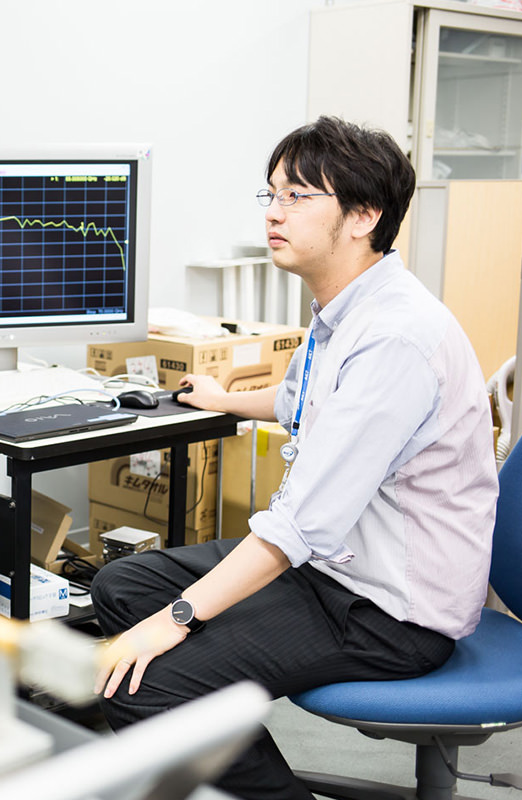
Senior Researcher Sasaki carrying out measurement.
Energy absorption concentrates over the surface of the human body by millimeter-wave radiation. Therefore, safety assessment focusing on the skin and eyes, which are tissues in contact with air, is a priority for public safety. In the eye in particular, heat becomes easily concentrated, causing the temperature to become higher than that of the skin. This is because there is no biological mechanism to spread heat, such as blood vessels. Our research group developed a high-resolution ocular model from an MRI system (Figure 2) We developed systems for the measurement of dielectric properties (Figure 3), electromagnetic field radiation is to use a phantom (Figure 4).
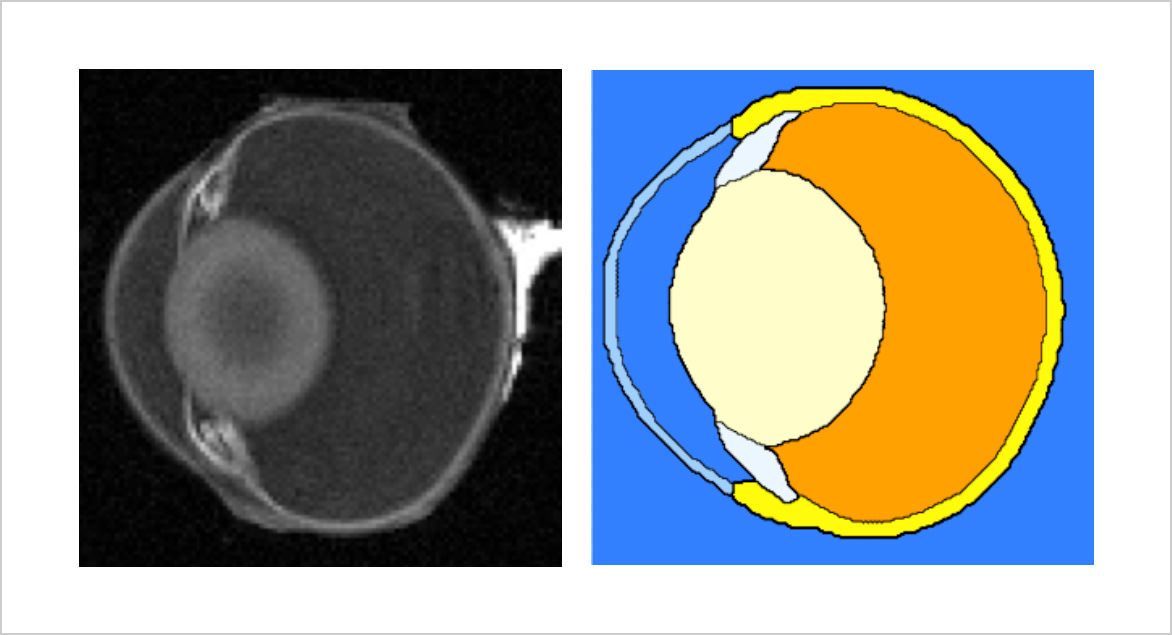
Fig 2. MRI image (left) and high-resolution model of the enucleated eyeball (right).
(2) Dielectric property measurement
It is necessary to understand the dielectric characteristics of biological tissues and organs, which comprise the human body, in order to conduct precise dosimetry for energy absorption inside the body. Until quite recently, assessment by simulation was difficult to conduct because of the scarcity of data on dielectric properties at millimeter-wave frequencies. We developed systems for the measurement of dielectric properties, and measurement data are used for the safety assessment of electromagnetic field radiation.
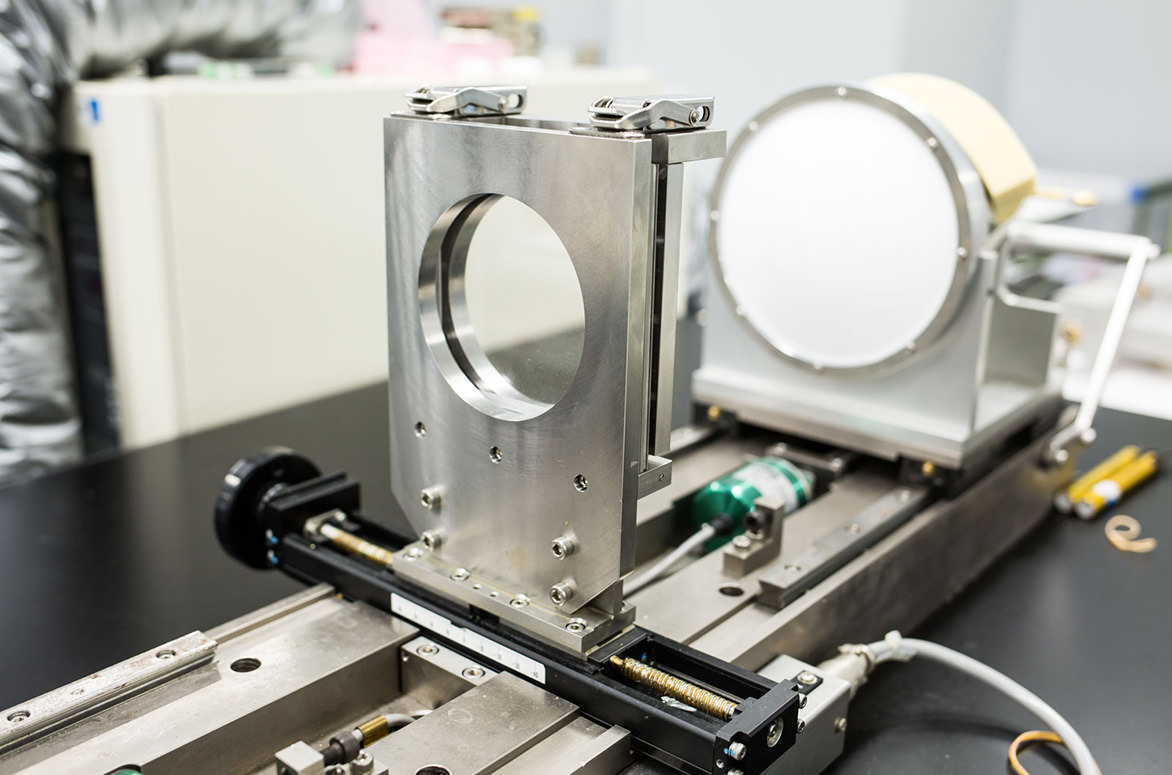
Fig 3. Dielectric property measurement system in millimeter wave frequencies.
Experimental research with human equivalent phantom
Not only assessment by simulation, but also assessment with an actual applicator is essential for safety assessment. Our approach to quantifying the energy absorption and temperature rise inside the human body caused by electromagnetic field radiation is to use a phantom. The phantom has dielectric characteristics similar to those of a human body; hence, it is called a human equivalent phantom.
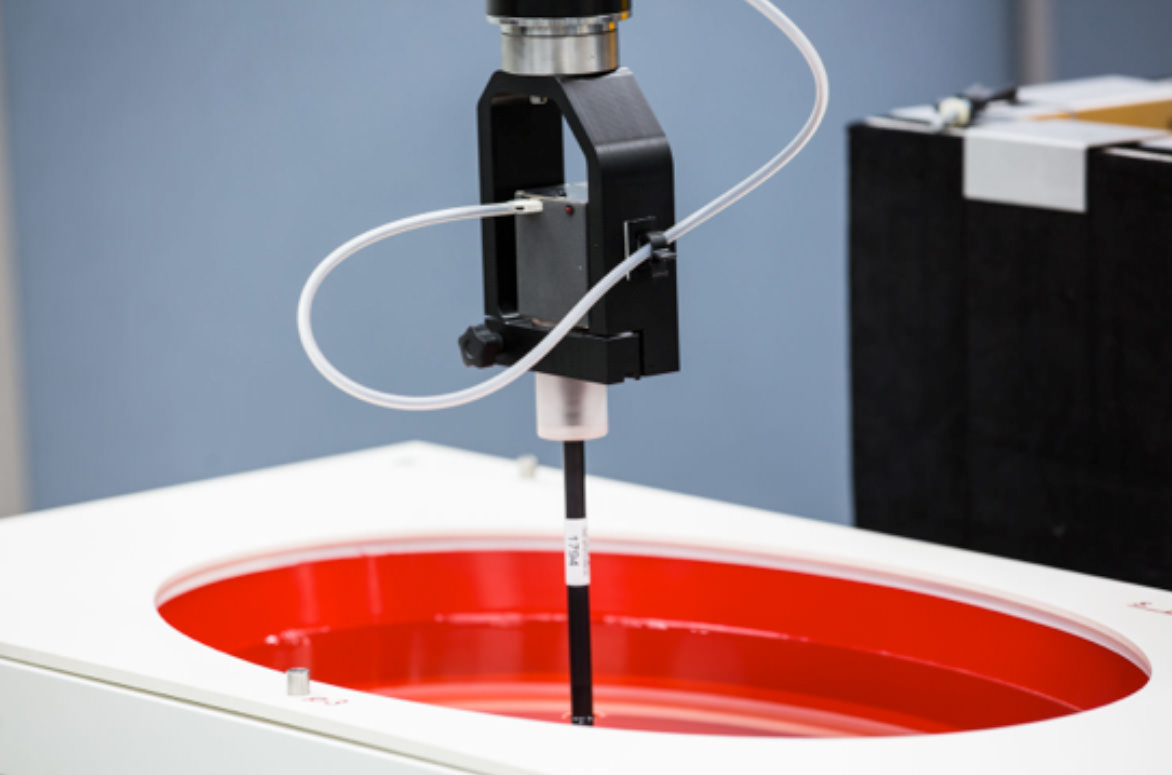
Fig 4. The energy absorption measurement system using liquid type human equivalent phantom at microwave frequencies.
At millimeter-wave frequencies, a solid-type phantom is used to estimate the energy absorption or temperature rise from any applicator. The comparison of experimental and simulation approaches allows validation of the data obtained by each approach, leading to the acquisition of reliable data for safety assessment (Figure 5, 6).
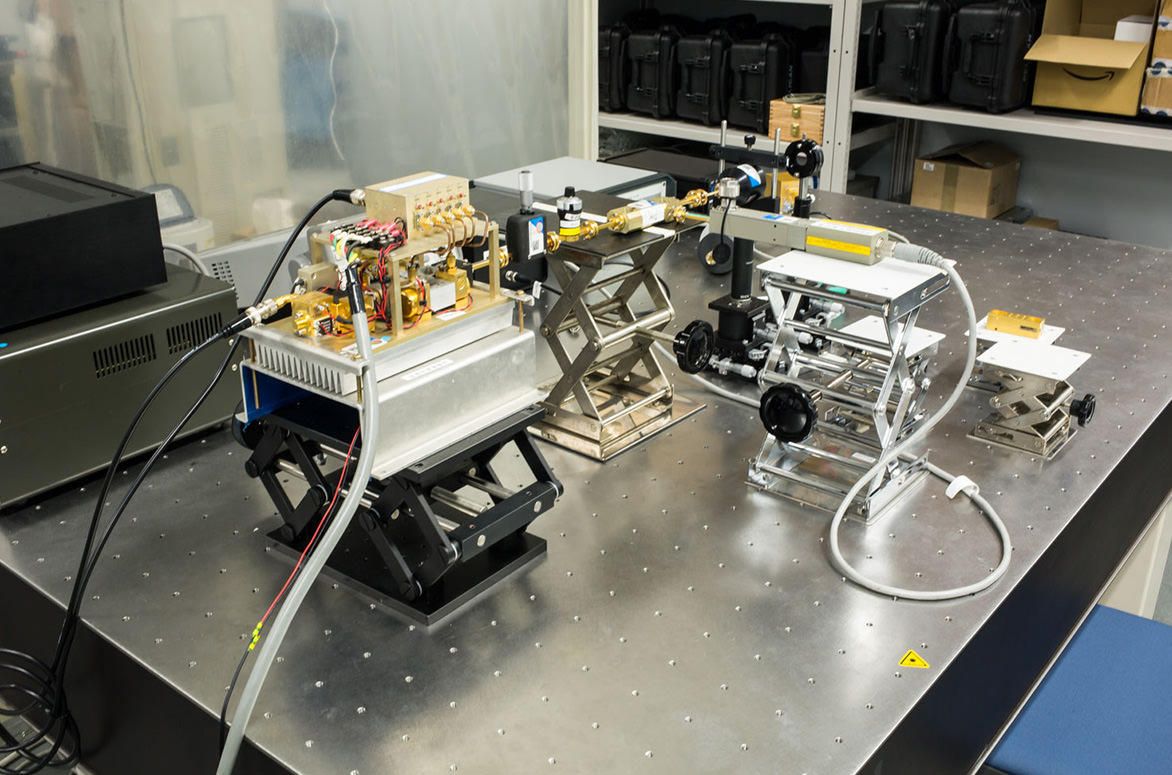
Fig 5. The applicator for the safety assessment in millimeter wave frequencies.
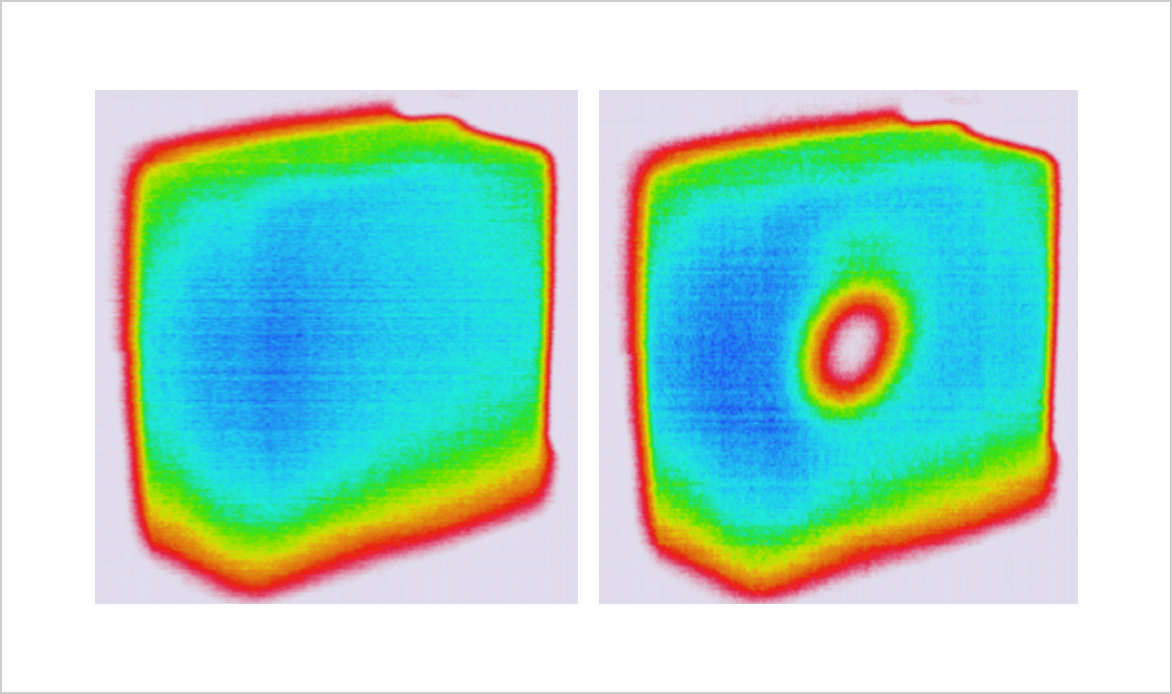
Fig 6. An example of the assessment using solid-type human-equivalent phantom.
Thermal images before (left) and during (right) radiations at 120 GHz.
Many experts on measurement technologies belong to electromagnetic compatibility laboratories. These experts are working on the research and development of technologies for the accurate measurement of radiation fields using an antenna as an example. These technologies have been adapted for research on safety assessment; therefore, we can provide research data that is reliable, accurate, and traceable.
Cooperation with medical experts is important for safety assessments. In some aspects, our research group is collaborating with medical research groups, and our technologies for safety assessment are being adapted to research projects on medical verifications.
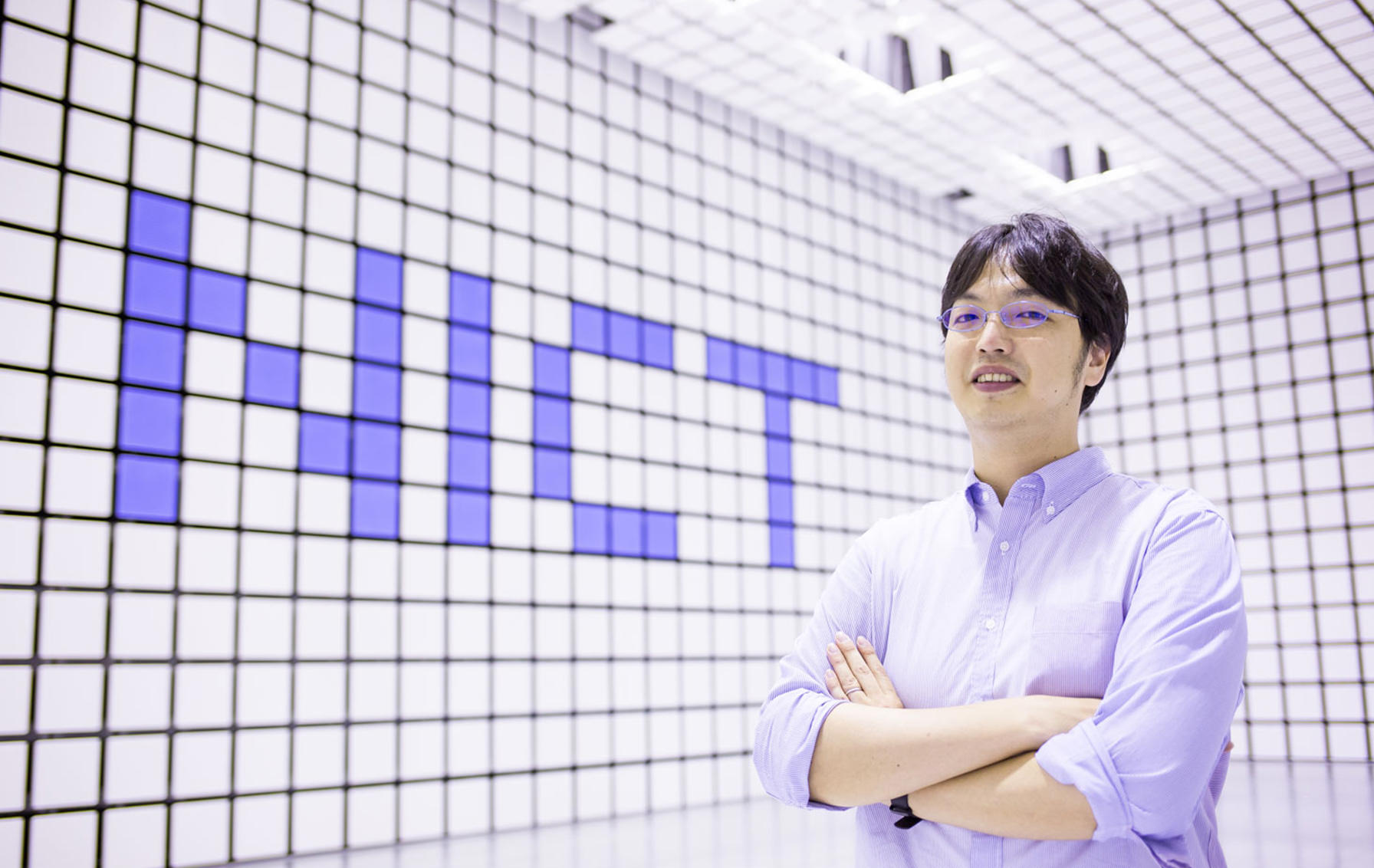
On the Large-sized Anechoic Chamber
- Home
- Researchers
- SASAKI Kensuke